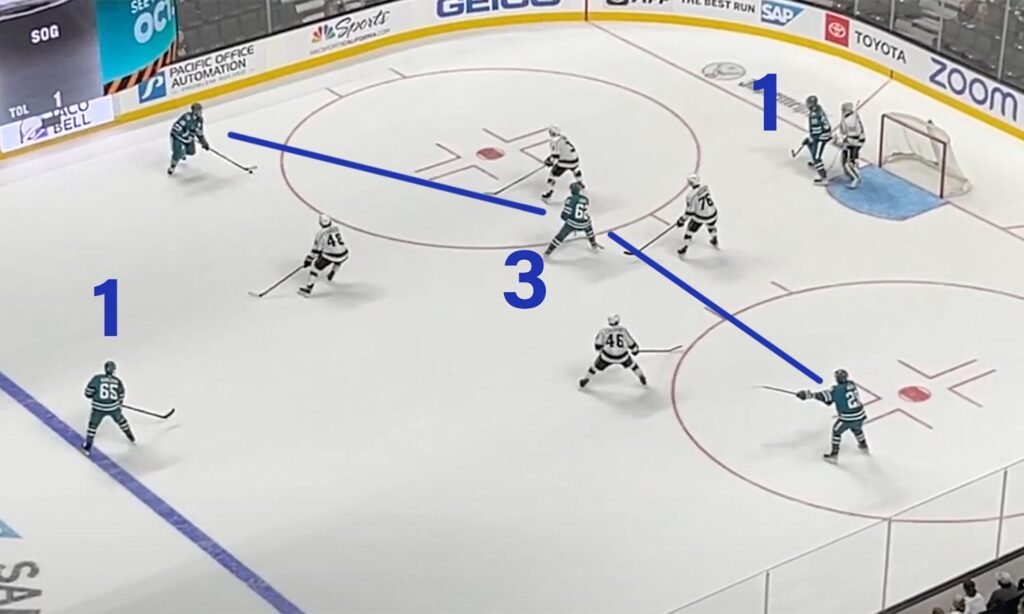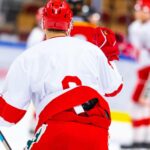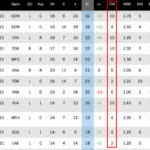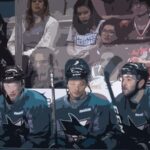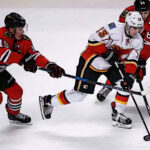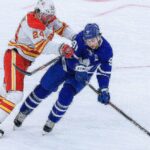Hockey is made up of a multitude of rules that players must adhere to.
Whether you’re watching the game at home or in attendance, you’ll quickly learn about these rules as they happen often in a match.
Take for example NHL rules such as icing and offside.
Icing is the illegal act of clearing the puck from the defensive half of the ice deep in your opponent’s end.
The play will be blown dead and the subsequent face off will take place back in the defensive zone.
Meanwhile, offside is a violation in which a player precedes the puck while entering the attacking zone.
This play is also subject to a whistle stop and a faceoff near the infraction.
There are rule violations which lead to more severe consequences.
Plays such as tripping, boarding, or slashing will result in a penalty for the offending team.
As a result, their opponent will be awarded a power play opportunity.
What is a Power Play in Hockey?
A power play is the result of one team taking a penalty, giving a numerical advantage in players to the opponent. Power plays can either be 2 (minor penalty), 4 (double-minor) or 5 minutes (major penalty) in length. And, at most, teams can have up to a two-man advantage at any given time.
You’ll often see the term power play abbreviated to PP on the television screen or scoreboard.
A countdown timer is usually set just below the team with advantage to indicate how long they have left on the power play.
There are two types of penalties in which a power play is awarded: minor and major penalties.
A minor penalty is two minutes in length, while the major results in a 5-minute, continuous power play.
Minor Penalty
If the team with the numerical advantage scores anytime during the 2-minute power play, the penalty automatically ends.
In some cases, an offending player can be handed a double minor penalty, which two 2-minute penalties.
The power play time is compounded to a total of four minutes.
However, if a goal is scored during time remaining on the first penalty, the power play time will be reduced to 2 minutes.
If a goal is scored when there is 2 minutes or less remaining on the double minor, the power play is over.
Major Penalty
During a 5-minute major, the penalty must run its course regardless of how many power play goals are scored.
A major penalty is usually handed to a player for a severe contact or intent to injure.
Power Play Scenarios in Hockey
There are three possible power play scenarios: 5-4 advantage, 5-3 advantage or 4-3 advantage.
The most common is the 5-4 advantage whereby a team is penalized, and the opponents are awarded the power play.
A 5-on-3 advantage can happen when infractions are called on:
a) separate players in the same play
b) another penalty is called during the ensuing power play
Lastly, a 4-on-3 advantage occurs if one team takes two separate penalties to the opponent’s single penalty.
The penalties can result from a single play or can be called across various plays.
What happens to teams with 3 or more penalties?
Based on the power play scenarios described above, you might be curious as to what happens when a team is called with 3 or more overlapping penalties.
I will explain the procedure from the perspective of the penalized team. Assume, player A is assessed a penalty first, followed by player B and player C.
Since teams can have, at most, a two-man advantage, player C’s penalty only begins after the time of player A’s penalty expires or the power play team scores (assuming a minor penalty).
If player A’s penalty expires, but the play is still in action, player A must remain in the box until the next whistle and must return to the bench during the stoppage.
Note: After returning to the team bench, Player A cannot return on the ice until the subsequent play stoppage.
If player B’s penalty expires while player A is still in the box, player A is eligible to leave the penalty box.
The same applies to player B if player C’s penalty were to expire while both players are in the box.
Power Play Structure and Formation
During the power play, you’ll notice that teams will ice a different combination of players compared to even strength.
For example, the advantaged team might ice 4 forwards and 1 defense, rather than the standard 3 forwards, 2 defense structure.
In some cases, if the team is in dire need of scoring, they may even ice 5 forwards to maximize their chances of potential.
There are several formations that the power play unit will use as a strategy including: Overload, Spread, Umbrella and 1-3-1 (covered below).
Since the teams on the power play have a numerical advantage compared to their opponents, they can better circulate the puck in the offensive zone.
That’s because there’s always one player that remains uncovered by the disadvantaged team and is left completely open.
The formations and movement of players on the ice are tactics used during the power play to confuse the team on the penalty kill.
In short, the power play team is trying to create enough time and space to an open teammate for a high scoring opportunity.
1-3-1 Power Play Formation
The most popular formation used in recent years is the 1-3-1.
The lone player closest to the blueline is the point player (usually a defenseman), followed by the two wingers and the bumper.
In front of the net, you have a player providing the screen.
See formation in the image below.
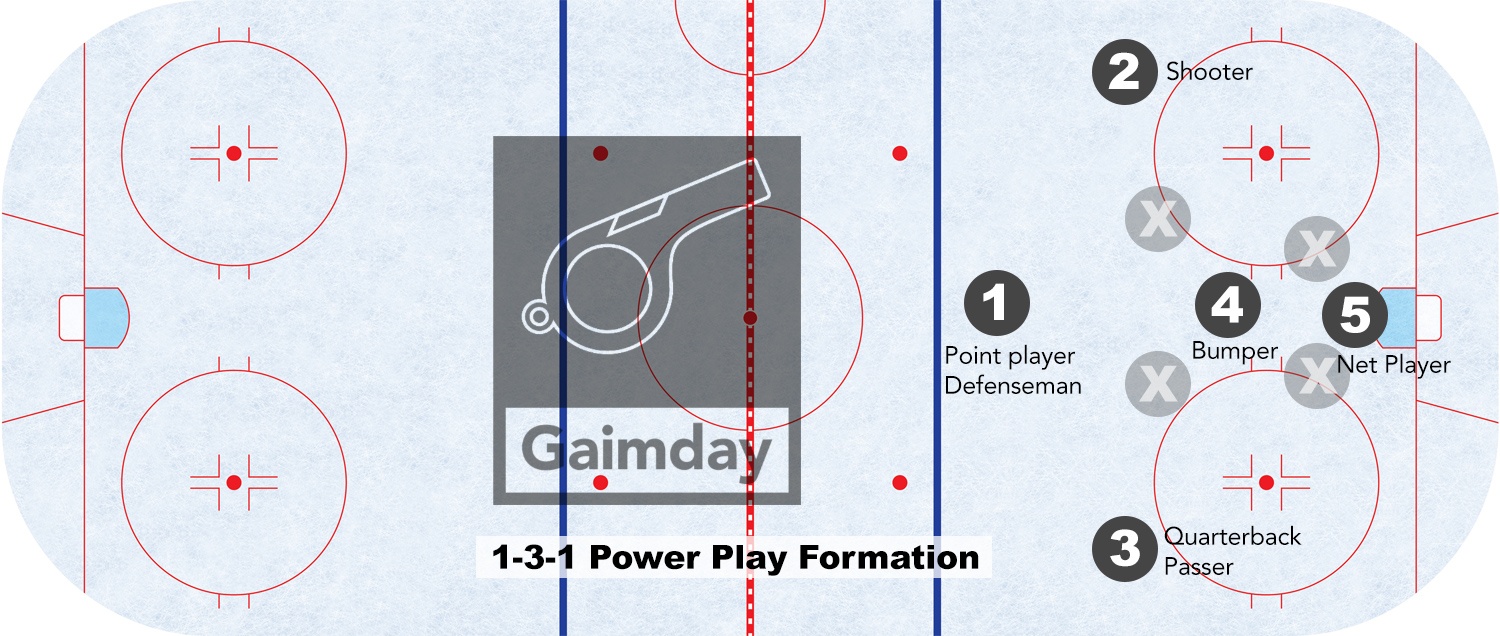
The bumper position helps prevent over-commitment on the wingers by the penalty killing team.
If the defensive team attack the winger (in control of the puck), they can make a quick pass to the bumper for a one-timer in the slot (premium scoring area).
As a result of defending against the bumper, it allows the power play team to circulate the puck on the perimeter between the two wingers and point player.
Other strategies include the winger having the option to make cross-seam passes either to the player by the net or to the opposite winger.
Effectively, the defensive team is paralyzed as they would overcommit on defense to one player, while exposing themselves to an alternate threat.
Check out this clip on the 1-3-1 strategy.
How do Power Plays Work in Overtime?
As you may know, during the regular season, teams play 3-on-3 during the 5-minute overtime.
So, what happens if a team is awarded a power play or two in regular season overtime?
First off, the offending player will be sent to the box – as you’d expect for any penalized player.
However, when the player count on the ice is slightly different for both teams.
Can you have a 3-on-2 Power Play in Overtime?
The quick answer is no, you cannot have a 3-on-2 power play in overtime.
The overtime rule states that no less than 3 skaters on each team must be on the ice during play.
Therefore, rather than removing a skater from the offending team, the advantaged team would ice an extra player (i.e. 4-3).
An additional player would be added should the team get a two-man advantage.
The shorthanded team would still have to send the penalized player to the penalty box.
If their penalty expires while the play is ongoing, the player can return to the ice for even strength (i.e 4-on-4).
Following a whistle for stoppage of play, the teams will return to 3-on-3 hockey.
These same rules apply for the two-man advantage.
Furthermore, if a team enters overtime with the man advantage, an extra player would be iced for the advantaged ice from the start.
Lastly, since teams play 5-on-5 during overtime in the playoffs, the standard rules apply for the power play as used in regulation time.
History of Power Plays in Hockey
Throughout the years in the NHL, there’s only been one major change to the power play rules.
During a game in the 1956-57 season, Montreal Canadiens Jean Béliveau managed to score a hat trick on the same power play.
The power play was a result of a 2-minute minor infraction, in which Beliveau scored three goals in 44 seconds.
Since then, teams on the penalty kill were allowed to return to even strength after a power play goal against for all minor penalties.
Final Thoughts
The power play is a component of the game that mainly benefits the team with the numerical advantage - hence the "power" in its name.
It’s important to note that power play time is not affected should the shorthanded team score.
And this happens more often than you’d think.
In fact, many NHL teams will ice some of the speediest players to work the penalty kill.
Along with their defensive abilities, these players are there to capitalize on power play errors.
By interrupting a breakout play or intercepting a pass, the penalty killers can quickly convert the disadvantage into a shorthanded opportunity.
Brad Marchand is one of those penalty kill specialists, who also happens to have the most shorthanded goals and points amongst all NHL active players.
Lastly, there is one rule that is ignored specifically during the penalty kill.
That is any player on the penalized team can clear the puck from their own end without fear of violating the icing rule.
It’s one of the perks (if any) of being on the receiving end of a power play.
